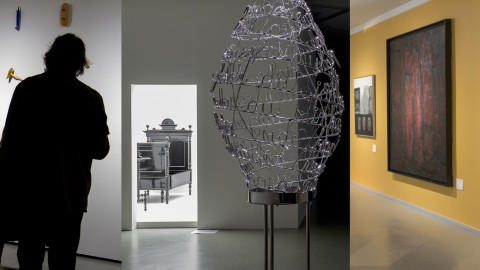Paris can wait. Visual arts in Central Finland 1947–1973.
19 December, 2014 – 24 May, 2015
Paris can wait is an extensive art exhibition of the visual arts from Central Finland made be-tween 1947–1973. The exhibition is based on research and organized by the Jyväskylä Art Museum. Nearly one hundred works of art from 26 Central Finnish artists are showcased in the exhibition. The displayed works are primarily from the art collections of the City of Jyväskylä.
Abstract art, and the many forms of Modernism, arrived in Finland in the decades that fol-lowed the wars. New influences cleared the table of rules concerning artistic form, style and beauty. Finnish artists visited France, Italy and Spain to study, and visit the museums, exhibitions, and to observe the lives of Continental European artists.
At this time, the art life of Central Finland was also active. The painter Helmer Selin (born 1920) organized visual arts classes for artists and amateurs in Korpilahti. Held in the cozy Finnish countryside, the classes became widely known throughout the country. In 1957, the pen name SANOVA commented about the classes that “Paris can wait…” The Korpilahti art classes were a high quality alternative to foreign study trips.
The City of Jyväskylä acquired the first works of its art collection at the end of the 19th century. The first artworks chosen were primarily portraits and statues, intended to brighten up the city. At first, the collection pieces were acquired without a solid plan. The methods of payment varied from different kinds of fundraising projects to art collection leases and artworks received as property substitution. The decision to purchase a work of art would be made, for example, by the mayor.
After the wars, however, culture increasingly came to be seen as part of state and municipality responsibility. Art was seen as useful in an age of reconstruction, and it became commonly viewed as a chief component in the creation of the welfare state. The actual allowance for the acquisition of artworks was established in Jyväskylä in 1947. The city appointed a committee to plan for the procurement of artworks, which resulted in more purposeful acquisition of art purchases. The City’s art collection therefore began to increase significantly from the 1960s onward.
Art always tells us something about the time in which it was made, but how does Finnish art in the 1950s and 1960s appear in light of the art collection of the city of Jyväskylä today? Do the artworks display a dialogue between the various styles of Modernism, or do these works march to the beat of a different drum?

